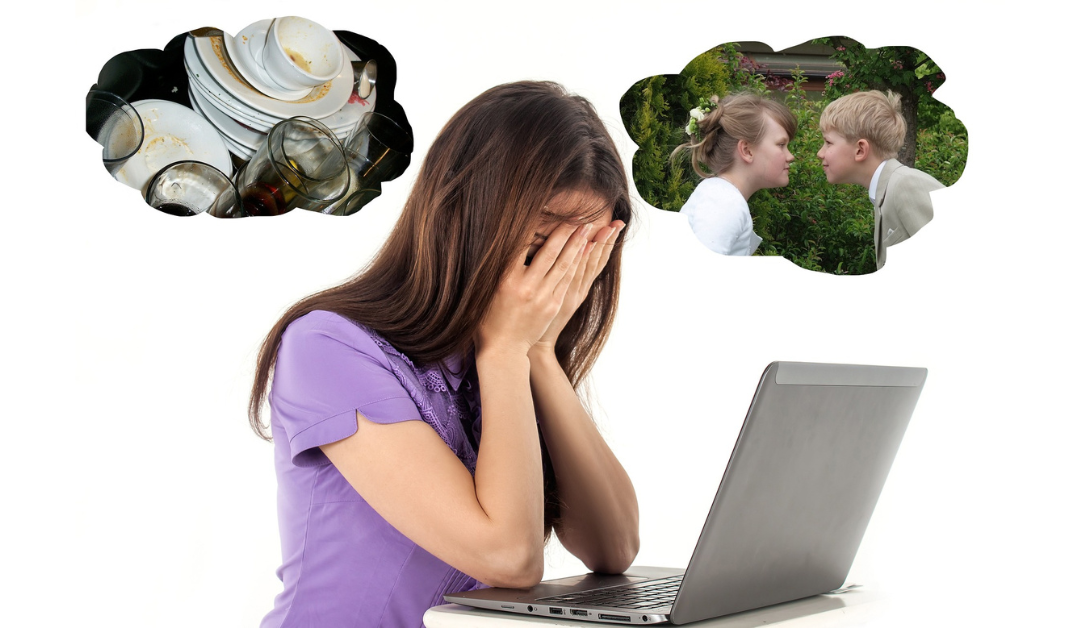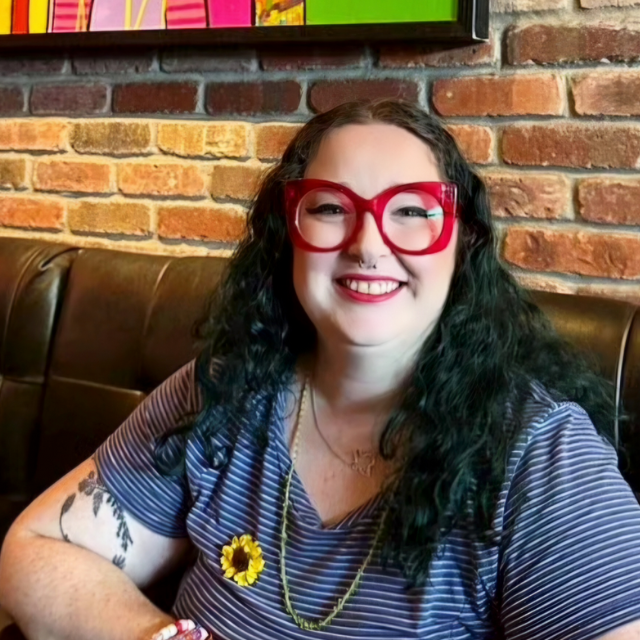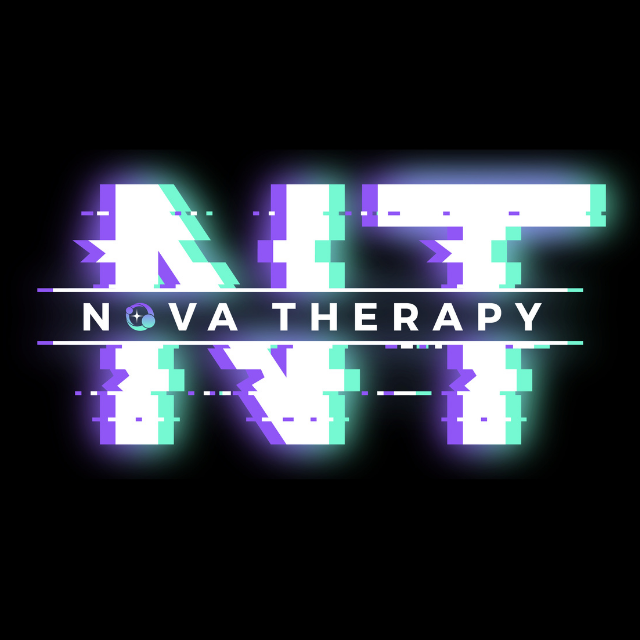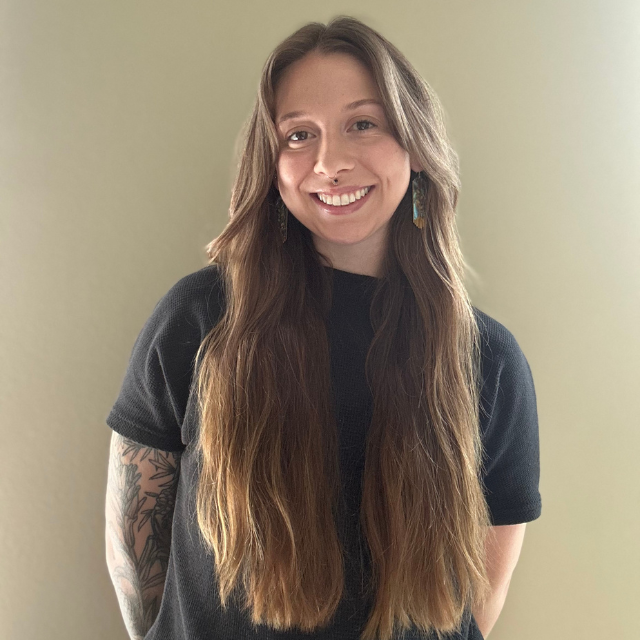
by Calien Trevino | Mar 14, 2025 | Anxiety, General, Trauma- and Stressor-Related Disorders
There’s something both exhilarating and terrifying about the question: Who am I?
For a long time, I thought I knew. As a teenager, I had this image of myself that felt so solid. But looking back, it’s almost laughable how little I actually knew. The truth is, I spent my entire life trying to be the person everyone needed me to be—the responsible one, the strong one, the peacekeeper. I was the glue holding my family together, the problem solver, the one who had to be level-headed and put everyone else first.
I was also the one expected to succeed. My dad made it clear that I needed to be the first to finish college, the one to “make something” of myself. And I did—on the outside, at least. But on the inside? I was drowning.
The Cost of Living for Everyone But Yourself
For years, I didn’t understand why I was so deeply unhappy. Why I felt empty. Why I didn’t want to be alive. My teenage and young adult years were spent in this quiet, crushing depression that I couldn’t even fully name. It wasn’t just sadness—it was this deep, aching void that made life feel unbearable.
Now, I understand why. It was because I wasn’t actually living. My life wasn’t mine. I had no control, no autonomy, no space to even ask myself what I truly wanted.
But if I had been able to?
I would have said that I wanted to be a dancer. That I wanted to be famous. That I wanted to explore my sexual identity. That I wanted to at least try to discover who I was without the weight of expectations crushing me.
But I wasn’t allowed to. My family needed me to be the rock, the fixer, the one who smoothed things over when everything fell apart. It got to the point where dancing—something I once loved—no longer brought me joy because deep down, I knew I’d never get to be the dancer I dreamed I could be.
Breaking Free & Finally Choosing Myself
And then, in 2023, something changed.
I found the strength to finally say no more. I told the world—meaning my family—to stop fucking telling me who I should be. And for the first time, I started to figure out who I actually was.
And what I found?
I’m bisexual. And my husband, the love of my life, is the first person who fully accepts that part of me. He gave me the courage to stop caring about what others think, to embrace myself fully, to stop hiding.
I love Pilates—which is shocking because I spent years resenting fitness. But now I see that my hatred of exercise wasn’t about movement itself—it was about the societal pressure to look a certain way, to be thin enough, perfect enough, worthy enough.
I stopped comparing my life to other people’s timelines. I embraced my career path, even though it’s barely starting in my 30s. I found my own definition of success, one that actually feels meaningful to me.
And you know what? Dancing makes me happy again. Because now, it’s mine.
How to Start Your Own Journey of Self-Discovery
If you’re feeling lost, if you’re struggling to figure out who you are outside of what everyone expects from you—know that you’re not alone. And also? There’s no deadline on self-discovery. You don’t have to have it all figured out by 18, 25, or even 30.
So where do you start?
1. Get Curious About Yourself
Ask the big questions: What excites me? What drains me? If no one was watching, what would I do just for me?
2. Try New Things
You don’t find yourself by just thinking—you find yourself by doing. Experiment. Take risks. Try that new hobby, explore that passion, put yourself out there.
3. Embrace the Cringe
You’re going to mess up. You’re going to change your mind. You’re going to look back and laugh (or cringe) at past versions of yourself. That’s growth. That’s the point.
4. Therapy & Journaling
If you’re struggling with identity, therapy can be life-changing. And what better way to start therapy then with Nova Therapy! Visit us at https://www.novatherapypllc.com to get started. Journaling is another powerful way to untangle your thoughts and explore your emotions without judgment if therapy feels a little bit intimidating to you right now.
5. Mindfulness & Self-Compassion
Learn to sit with yourself without distractions. Meditation, breathwork, or even just taking a moment to pause can help you reconnect with what feels right for you.
6. Stop Comparing Your Journey to Others
Social media makes it look like everyone else has life figured out. They don’t. Your timeline is yours—own it.
7. Listen to Yourself
Not your family. Not your friends. Not society. You. What feels right? What aligns with your values? The more you trust yourself, the more your real identity will unfold.
Finding Purpose Without the Pressure
Let’s talk about purpose. That word can feel so heavy—like if you don’t have some grand, world-changing purpose figured out, you’re failing. But here’s the truth: Purpose isn’t just one big thing.
It’s found in the small moments. In the things that bring you joy. In how you show up for yourself and others.
Instead of asking, What’s my one true purpose?, ask:
👉 What brings meaning to my life right now?
👉 How can I create joy in my everyday life?
👉 What do I want to explore next?
You Are Becoming—And That’s Beautiful
If you’re in the thick of figuring out who you are, take a deep breath. You’re not behind. You’re not lost. You’re becoming. And that is a damn beautiful thing.
So keep exploring. Keep questioning. Keep growing.
And most importantly? Keep choosing you.

by Calien Trevino | Feb 28, 2025 | Anxiety, Complex PTSD, Trauma- and Stressor-Related Disorders
Let’s be real—trauma isn’t just some buzzword. It’s a part of life for many of us, whether it’s from a tough childhood, heartbreak, or experiences we don’t even realize left a mark. And when we don’t deal with it, trauma has this sneaky way of showing up in our relationships. So today, let’s unpack how past trauma might be playing a role in your current connections, what the signs look like, and how you can start to heal and create healthier dynamics with the people you love.
How Trauma Affects Relationships
When we think about relationships, we want them to be about love, trust, and good vibes. But when unhealed trauma enters the picture, things can get messy. Trauma can mess with how we see the world, others, and even ourselves. It can make it tough to trust, open up, or communicate effectively.
For example, if you’ve been hurt by someone who walked out on you, you might fear rejection, leading to clinginess or even pushing people away first. If you’ve experienced betrayal, you might find yourself questioning your partner’s loyalty even when they’ve done nothing wrong. These reactions aren’t about the present—they’re echoes of the past.
The tricky part? Most of this happens on autopilot. You might not even realize your trauma is calling the shots. The good news? Recognizing this is a powerful first step.
Signs of Triggers and PTSD in Relationships
Trauma isn’t one-size-fits-all, but here are some common ways it might show up in your relationship:
- You’re Super Reactive: A small disagreement feels like a huge deal, or you find yourself snapping easily.
- You Avoid Certain Topics: Some things just feel too heavy or risky to talk about.
- Trust Issues: Even when your partner hasn’t given you a reason, you find it hard to believe they’re being honest or loyal.
- Always On Edge: You feel like you’re waiting for the other shoe to drop.
- Low Self-Esteem: You question whether you’re worthy of love or if your partner truly cares about you.
If any of these sound familiar, it might be worth looking inward to see if unhealed trauma is playing a role.
The Pros and Cons of Bringing Trauma Into Relationships
Okay, so here’s the thing—nobody walks into a relationship without some baggage. And honestly? That’s okay. Trauma is just part of being human. But let’s break down how it can affect your relationship, both for better and worse:
The Upsides:
- Deeper Connection: When you’re open about your struggles, it can lead to vulnerability and a closer bond.
- Growth Opportunities: Working through trauma together can actually make your relationship stronger.
- Empathy: People who’ve experienced trauma often have a deeper understanding and compassion for others.
The Downsides:
- Misunderstandings: Trauma can cause you to misinterpret what your partner says or does.
- Emotional Walls: It might be hard to fully open up, even when you want to.
- Conflicts: Triggers can lead to unnecessary arguments or hurt feelings.
The key is acknowledging these dynamics so you can work through them together.
Steps Toward Healing and Building Healthy Dynamics
Healing isn’t an overnight fix—it’s a process. But it’s one that’s absolutely worth it. Here are some steps to get started:
- Spot the Patterns: Start noticing how your past might be influencing your present. A little reflection can go a long way.
- Talk It Out: Share your experiences and triggers with your partner. Being honest helps build understanding and trust.
- Get Professional Help: Therapy is a game-changer. A good therapist can help you process your trauma and develop healthier coping skills. Visit us at https://www.novatherapypllc.com to get started.
- Set Boundaries: Boundaries are about creating a safe space for both you and your partner. They’re not selfish—they’re essential.
- Show Yourself Grace: Healing is messy, and that’s okay. Be patient and kind to yourself along the way.
How Your Partner Can Support Your Healing
A supportive partner can make all the difference. If you’re in a relationship, here’s how your partner can help:
- Just Listen: Sometimes you don’t need advice; you just need to feel heard.
- Be Patient: Healing isn’t a straight line, and it takes time. Patience shows love and commitment.
- Learn About Trauma: Encourage your partner to educate themselves so they can better understand your experience.
- Offer Reassurance: A little encouragement and consistency go a long way in rebuilding trust.
- Respect Boundaries: Whether it’s giving space or avoiding certain triggers, respecting your needs shows care and support.
Moving Forward Together
Here’s the thing: unhealed trauma doesn’t have to define your relationships. With some self-awareness, open communication, and a willingness to grow, you can create connections that are rooted in love, trust, and respect. Healing might feel daunting, but every step forward—no matter how small—is progress.
So, take a moment to reflect. Where are you on your healing journey? And if you’re ready, consider reaching out to a therapist or starting a conversation with your partner. You’ve got this, and brighter, healthier relationships are absolutely within reach.

by Calien Trevino | Feb 14, 2025 | General, Trauma- and Stressor-Related Disorders
Valentine’s Day is often seen as a celebration of romantic love, but the truth is, it’s about all types of love—and that includes the love you give yourself and the love shared with your closest friends. Whether you’re in a relationship, navigating heartbreak, or spending the day with your besties, this day can be a powerful reminder to appreciate the people who matter most in your life.
In today’s blog post, we’re going to explore the importance of self-love, nurturing your friendships, and strengthening the love in your relationship—because Valentine’s Day is really about making sure you feel loved in every way possible.
Let’s Start with You: Self-Love and Self-Care
Valentine’s Day can bring up all kinds of emotions—especially if you’re single or going through a tough time. It’s easy to fall into the trap of thinking you need someone else to make you feel loved and happy, but that’s just not true. The most important relationship you have is the one with yourself.
If you’re not in a relationship, Valentine’s Day is the perfect opportunity to practice self-care and focus on celebrating YOU. Maybe you take yourself out to your favorite coffee shop, treat yourself to a cozy evening, or do something creative or relaxing that makes you feel good. Self-love isn’t about perfection—it’s about showing yourself kindness, patience, and appreciation.
Remember, you are your own source of happiness. You can’t always rely on other people to make you feel validated, loved, or worthy. True love starts from within, and when you prioritize self-care and self-compassion, you’re in a better position to love others, too.
Healing from Heartbreak: Be Gentle with Your Heart
If you’re recovering from heartbreak or feeling lonely, Valentine’s Day can feel like a reminder of what you’re missing. But I want you to know that healing takes time, and it’s okay to not have everything figured out. Heartbreak is hard, and sometimes it feels like you’ll never fully move past it. But you will.
It’s important to allow yourself to feel the emotions without judgment—whether that’s sadness, anger, or even relief. These feelings are all a part of the process. Be gentle with yourself. Don’t rush your healing. It’s not a linear path, and that’s perfectly fine.
While you’re healing, find ways to nurture yourself. Focus on activities that bring you peace and joy, whether that’s journaling, spending time in nature, or hanging out with close friends. The key is to honor your feelings and give yourself the time and space to heal—there’s no deadline for moving on.
Galentine’s Day: Celebrating Friendship & Connection
For many of us, friendships are the true backbone of our lives. Your besties, the ones who have laughed with you, supported you, and celebrated your wins—they deserve all the love today, too.
Galentine’s Day is all about appreciating the amazing women and friends who choose you as an important person in their life. Even if your friends are in different places emotionally or physically, remember this: they’ve chosen you. That choice to be part of your life is worth celebrating.
Here are a few ways to show your appreciation to the incredible friends in your life:
- Send a thoughtful message: Let them know how much they mean to you. It could be as simple as a text, a handwritten card, or a thoughtful gift that shows you care.
- Set up a virtual hangout: If you can’t be together in person, a video call or even a surprise care package can go a long way in showing you’re thinking of them.
- Reminisce about your favorite memories: Reach out to friends and share your favorite moments together—reminiscing about those times brings you closer and strengthens your bond.
- Offer emotional support: Check in on your friends, listen to them, and show them they can count on you, no matter where they are in life.
Valentine’s Day isn’t just about romantic love; it’s about honoring all the people who make your life special. So take today as an opportunity to thank those who’ve been there for you, and let them know you appreciate them.
Celebrating Love as a Couple: Let’s Keep It Real
Now, for those of you in relationships, Valentine’s Day can be a time to celebrate the bond you share with your partner. But here’s a little reminder: Valentine’s Day isn’t about materialism or extravagant gestures. It’s about connection, appreciation, and showing love in meaningful ways.
If you and your partner are feeling pressure to make the day perfect or splash out on expensive gifts, take a step back and focus on the true meaning of this day—it’s about love, not stuff.
Here are a few ways to show love to your partner today (and every day):
- Spend quality time together: Whether it’s a cozy night in or a walk down memory lane, make sure you’re present with each other.
- Small gestures, big impact: A handwritten note, a thoughtful surprise, or just a simple “I love you” goes a long way. It’s not about the grand gestures, it’s about showing you care.
- Communicate in their love language: Make sure you’re showing love in a way that resonates with your partner—whether that’s through words, touch, acts of service, or quality time.
- Be kind and supportive: In a healthy relationship, kindness goes a long way. Show up for each other, even when things get tough.
Remember, Valentine’s Day is about connection, not comparison. Show love through the little things, be kind to each other, and celebrate the bond you’ve created together.
Wrapping Up
Valentine’s Day is a day to celebrate love in all its forms. Whether it’s self-love, the love of your friends, or the bond you share with your partner, it’s a chance to reflect on the connections that matter most.
So, take today to appreciate yourself and the people who choose you every day. And no matter what your relationship status is, remember that you are deserving of love, kindness, and all the good things life has to offer.
Happy Valentine’s Day! Let’s spread love and appreciation in every way we can.

by Calien Trevino | Jan 24, 2025 | Anxiety, General, Trauma- and Stressor-Related Disorders
Let’s be real: life can be overwhelming. Whether you’re hustling through your 9-5 or managing kids, a home, and everything in between, burnout can creep up on you faster than you can say “I need a vacation.” But here’s the good news: you don’t have to hit rock bottom before you make a change. Recognizing burnout early and making small tweaks to your routine can make a huge difference in how you feel. So, let’s talk about burnout prevention and how you can protect your energy while still crushing it in life.
What Burnout Looks Like (And How to Spot It Early)
We’ve all been there—the endless to-do lists, the pressure to do more, and the constant feeling like you’re running on empty. But burnout isn’t something that just happens overnight. It’s a slow burn, pun intended. And if we’re being honest, most of us don’t realize it until it’s almost too late.
Here are some signs burnout might be sneaking up on you:
- Exhaustion – Not just tired, but deeply drained. Like, you can’t even remember the last time you felt rested.
- Irritability – Everything and everyone is annoying. You’re snapping at people, even over little things.
- Feeling disconnected – You’re mentally and emotionally checked out. Whether it’s work, your relationships, or your hobbies, nothing feels exciting anymore.
- Physical issues – Stress shows up in the body. Headaches, stomach problems, trouble sleeping… it’s your body’s way of saying, “I’m not okay.”
- Lack of motivation – Things that once lit a fire in you now feel like a chore. You’re struggling to find the energy or desire to do anything.
If you’re nodding your head to any of these, don’t freak out just yet! The good news is, burnout is manageable if you catch it early and take action.
The Ripple Effect: How Burnout Affects You AND the People Around You
Here’s something we don’t talk about enough: burnout doesn’t just affect you—it spills over into the people around you. If you’re running on empty, it’s hard to show up for the people who matter most.
- Your relationships: You might find yourself snapping at your partner, pulling away from your kids, or avoiding friends. When you’re burned out, it’s easy to become distant or short-tempered with the people you care about.
- Your work: Burnout can tank your productivity. You might miss deadlines, make mistakes, or feel like you’re just going through the motions. And let’s be real, if you’re a leader, that burnout can spread to your team, lowering morale for everyone.
- Your health: Chronic stress can lead to a ton of physical problems, like headaches, sleep issues, and even long-term conditions like heart disease. It’s not just mental exhaustion—it’s a full-body experience.
So, yeah, burnout doesn’t just hurt you—it affects everyone around you. That’s why it’s so important to prioritize your well-being before you hit that point.
Setting Boundaries: No, You Don’t Have to Do It All
Now that we’ve identified burnout, let’s talk about what we can do to stop it before it gets worse. Boundaries, my friend. It’s a simple word, but it’s game-changing.
If you’re someone who’s constantly taking on more at work or home, you’ve got to learn how to say no. And guess what? It doesn’t make you lazy or ungrateful—it makes you smart. Here are a few ways to start setting boundaries:
- Say no (without the guilt) – Whether it’s an extra work project or another playdate you don’t have the energy for, it’s okay to say no. You don’t have to explain yourself or feel bad about it.
- Set work hours – If you’re working from home, set clear boundaries for when your workday starts and ends. Don’t let your job bleed into your personal time.
- Delegate – You don’t have to do it all. Whether it’s asking for help at home or at work, delegating tasks gives you the space you need to breathe.
- Put yourself on your calendar – Yep, you heard me right. Schedule time for yourself, even if it’s just 10 minutes to relax, read, or take a walk. If it’s not on the calendar, it probably won’t happen.
Sustainable Self-Care: Little Changes That Make a Big Difference
You don’t need to go on a week-long spa retreat (although, that would be nice, right?) to prevent burnout. Sometimes, the smallest changes can make the biggest impact on your well-being. Let’s talk about some simple, sustainable self-care strategies:
- Micro-breaks – Taking 5-10 minute breaks every hour can actually help you stay focused and recharge throughout the day.
- Hydrate and Nourish – We’re all guilty of grabbing unhealthy snacks or forgetting to drink water when we’re busy. But keeping your body fueled is a must for maintaining energy.
- Move Your Body – You don’t have to hit the gym for an hour. A quick stretch, a walk around the block, or even dancing around your kitchen can boost your mood and energy.
- Connect with Loved Ones – Whether it’s a phone call, a text, or a quick hangout, staying connected to people who lift you up is key.
- Sleep – It’s the foundation for everything. Aim for 7-9 hours a night. Your body and brain will thank you.
- Therapy – Visit us at https://www.novatherapypllc.com because mental health is a priority!
Final Thoughts: Protect Your Energy
Burnout doesn’t have to be inevitable. By setting boundaries, recognizing the signs early, and making small changes to your daily routine, you can protect your energy and prevent burnout from taking over. Remember: you’re allowed to prioritize yourself. In fact, it’s one of the best things you can do for everyone around you.
Take care of yourself first, and everything else will fall into place.

by Calien Trevino | Jan 17, 2025 | Complex PTSD, Eating Disorder, Mood Disorders, Personality Disorders, Psychotic Disorders, Trauma- and Stressor-Related Disorders
Hey, friends! 🎉 Happy New Year! With 2025 just starting, now’s the perfect time to reset and make some changes – and one of the best things we can do for ourselves is prioritize our mental health. For many of us, though, opening up about mental health can feel like the hardest part. Whether you’re feeling overwhelmed, anxious, or just like you need a change, talking about your mental health with the people you care about can make all the difference.
But let’s be honest – it’s not always easy. We might feel nervous, unsure of what to say, or even worried about how others will react. And that’s totally normal. But here’s the thing: talking about mental health is one of the best things we can do for ourselves and our relationships. It’s time we make it a goal for 2025 to ask for help without shame, be open about what we’re feeling, and start these conversations – even if they feel a little scary.
Why Talking About Mental Health Matters
You might be thinking, “Why is this so important? It’s just my feelings, right?” Well, yes and no. Mental health affects everything – from how we feel about ourselves to how we connect with others. And the more we talk about it, the more we normalize it. Talking about mental health isn’t just about unloading your worries – it’s about getting support and connecting with others who might be feeling the same way. It helps you process your feelings, get advice, and maybe even gain new perspectives. Plus, when you talk about what’s on your mind, it often helps you feel better – even if just for a moment.
Honestly, for me, talking about my mental health with people I trust clears the air. It’s like hitting the reset button for my brain, and suddenly I can breathe again. So, don’t be afraid to put your feelings into words – it’s actually super empowering.
The Risks of Not Talking About Mental Health
Okay, so let’s talk about what happens when we don’t open up. Sometimes, it feels easier to keep things to ourselves, right? Maybe you’re thinking, “I don’t want to burden anyone” or “I’ll handle this on my own.” But here’s the thing: bottling up your feelings can make everything worse.
If we don’t talk about what’s going on inside, it can lead to increased anxiety, stress, and even physical health problems. Keeping it all inside is like holding in a breath you really need to exhale. Over time, it starts to affect you in ways you might not even realize. And let’s not forget – mental health struggles can get bigger if we ignore them. The sooner we talk about our feelings, the sooner we can get the support we need.
Plus, not talking about it can make you feel isolated. You might think no one gets it, but trust me – you’re not alone. So, the next time you’re tempted to keep it all to yourself, think about how much better it could feel to have someone by your side, supporting you.
How to Actually Start the Conversation
I get it – talking about mental health can be awkward at first. But starting the conversation doesn’t have to be complicated. Here are a few tips for easing into it:
- Pick the Right Time and Place
This one’s huge. No one wants to have a heart-to-heart when the house is full of people or when your friend is rushing out the door. Find a quiet, private moment to chat so you both have the space to focus and listen.
- Start Small, Then Dive In
You don’t have to go straight into deep, heavy stuff. It could be as simple as saying, “I’ve been feeling a little off lately, and I just wanted to talk about it.” This gives you the chance to ease into the conversation without feeling overwhelmed.
- Be Clear About What You Need
Let your loved one know what you need from the conversation. Are you looking for advice? Do you just need someone to listen? Being upfront about this can take a lot of pressure off both of you.
What to Do if They’re Uncomfortable or Don’t Know How to Help
Sometimes, the person you’re talking to might not know what to say or how to help. That’s okay! Not everyone is comfortable with talking about mental health, and that doesn’t mean they don’t care. If they seem unsure or a little uncomfortable, here’s what you can do:
- Give Them Time
They might need a moment to process what you’re saying. Be patient. Let them know you’re open to talking whenever they’re ready.
- Educate and Encourage
If your loved one seems confused or unsure about what you’re going through, it’s a great opportunity to share a little more about your experience or educate them about mental health. It’s not about making them experts, but just opening their eyes to what you’re facing.
- Set Boundaries
If the conversation isn’t going as well as you hoped, it’s totally okay to pause and give both of you some space. It doesn’t mean the conversation is over – just that it might need to be revisited later.
Make Talking About Mental Health a Priority This Year
As we move into 2025, let’s make it our goal to prioritize our mental health. This means talking about it more, asking for help without shame, and making space to share our feelings with the people who care about us. It’s a small step, but it’s a powerful one.
You deserve to be heard and supported, and by starting the conversation, you’re not just helping yourself – you’re helping to make mental health something we can all talk about more openly. And that’s how we start creating a culture where we feel safe to be vulnerable and real.
Here’s to a year of better mental health and better conversations. Let’s do this with NT at https://www.novatherapypllc.com!
Page 2 of 9«12345...»Last »
















